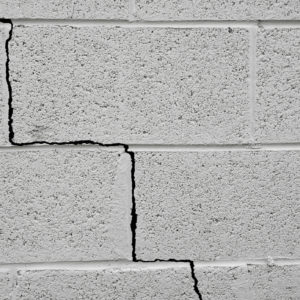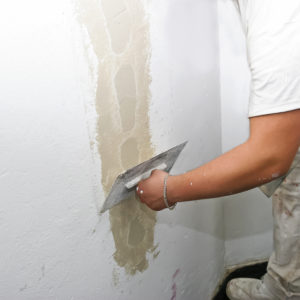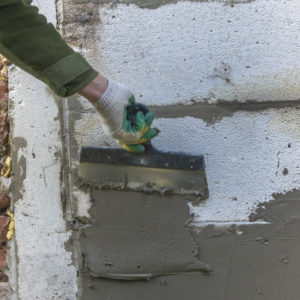 Repairing foundation cracks is an essential aspect of maintaining your home. These cracks in concrete foundations can arise from various causes, including the natural settling of the house, changes in soil pressure, extreme weather, or construction issues. While some foundation cracks may be cosmetic, others can indicate deeper structural problems, necessitating immediate and effective repair.
Repairing foundation cracks is an essential aspect of maintaining your home. These cracks in concrete foundations can arise from various causes, including the natural settling of the house, changes in soil pressure, extreme weather, or construction issues. While some foundation cracks may be cosmetic, others can indicate deeper structural problems, necessitating immediate and effective repair.
Both internal and external methods of sealing foundation cracks can be effective. The best approach depends on factors like the presence of physical obstructions (e.g., decks or patios), the condition of the basement (whether it’s finished or unfinished), and the space’s internal usage (such as areas with drywall, paneling, or furnaces). It’s crucial to consider the crack’s location, type, and depth of damage. Thus, relying on a repair expert’s judgement and ensuring a thorough on-site assessment is key to determining the most suitable repair method for your home.
When considering the repair of foundation cracks, it is important to consult with specialists like those at Crackmasters Basement Waterproofing, rather than opting for a general handyperson or plumber. Making an informed choice in selecting experienced professionals can prevent further damage and save on costly repairs in the long run.
Jump to: Interior Crack Repair / Exterior Crack Repair
Choosing Between Internal and External Repairs
When it comes to repairing foundation cracks, one of the key decisions homeowners face is choosing between internal and external repair methods. Several factors influence this decision, and understanding them is crucial for effective and long-lasting repairs.
Location of the Crack
The position of the crack on the foundation plays a significant role. Internal repairs are often more feasible for cracks that are easily accessible from the inside, such as those in unfinished basements or areas without major obstructions. External repairs might be necessary for cracks on the exterior side of the foundation or those that extend below the ground level.
Severity and Type of Crack
The nature of the crack itself can dictate the repair method. Smaller, hairline cracks are typically addressed from the inside using injection methods. Larger, more complex cracks, especially those that indicate structural issues or extend through the foundation, may require external repair to ensure comprehensive treatment.
Presence of Obstacles
External factors such as landscaping, decks, patios, or utility lines can influence the choice. If external repairs require extensive excavation that might disturb these elements, internal repairs may be preferred. Conversely, internal obstacles like drywall, built-ins, or major appliances might make external repairs more practical.
Waterproofing Needs
When waterproofing is a primary concern, especially in areas prone to water infiltration, the choice of repair method is critical. External repairs often involve sealing the foundation from the outside, which can provide more robust waterproofing. However, advanced internal waterproofing techniques have also proven highly effective.
Cost Considerations
Budget constraints can influence the decision. Generally, internal repairs tend to be less expensive and less invasive compared to external repairs, which might involve significant excavation and landscape restoration costs.
Long-Term Effectiveness
Both methods can be effective, but the long-term success of the repair often depends on the quality of the work and the materials used. It’s essential to weigh the durability of the repair method against the severity and type of the foundation crack.
Repairing foundation cracks efficiently requires a careful evaluation of these factors. Homeowners should consult with foundation repair specialists who can assess the specific situation and recommend the most suitable method, whether it’s an internal or external approach. The ultimate goal is to not only repair the crack but also to address the underlying cause to prevent future issues.
Repairing Foundation Cracks From the Interior
The process of repairing foundation cracks no longer relies on rudimentary methods like chipping away at concrete with a rotary hammer and applying hydraulic cement. While quick, these techniques lacked durability and did not offer lasting solutions. Hydraulic cement and epoxy resins, once popular, are now less favored for long-term stability.
Currently, the preferred method for repairing foundation cracks involves crack injection techniques using either epoxy or urethane resins. This process starts with sealing the internal side of the crack using an epoxy paste, followed by filling the entire crack with a chosen resin—either epoxy or urethane. Experts often prefer urethane for its superior waterproofing capabilities and flexibility.
Advantages of Internal Foundation Crack Repair
Interior foundation crack repair is often the preferred method when addressing cracks that contribute to a damp basement. Experts lean towards this approach for multiple reasons, each emphasizing the efficiency and effectiveness of internal repairs.

Easier Leak Identification
Conducting an internal inspection allows for a detailed assessment of the entire inner wall, helping to accurately pinpoint the source of leaks. This is particularly beneficial when dealing with multiple potential leak points, such as rod holes, that might be leaking from the exterior.
Comprehensive Gap Filling
The internal repair process involves injecting a specialized polymer directly into the foundation wall’s crack. This method ensures that the entire length and depth of the crack is filled, offering a more thorough repair compared to external methods that primarily address surface issues.
Minimal External Disruption
Interior repairs eliminate the need for extensive external work, such as excavating soil or navigating around outdoor features like drainage systems, decks, fences, and landscaping. This not only minimizes disruption but also reduces the risk of damaging external elements like tiles, utility lines, and root systems.
Cost-Effectiveness
One of the most significant advantages of interior repairs is their cost efficiency. Internal crack repair, typically involving polymer injections, is generally more affordable, sometimes only costing a few hundred dollars. In contrast, external repairs can be considerably more expensive, especially when factoring in the costs associated with soil removal, landscape restoration, and potential damage to external utilities.
Weather-Independent and Less Labour-Intensive
Interior crack repairs can be carried out under any weather conditions and usually require less manpower, often just a single technician. On the other hand, external repair work is weather-dependent and generally more labor-intensive.
Use of Durable, Waterproof Materials
Unlike external methods that may rely on concrete patches, which are prone to cracking and leaking, interior repairs utilize waterproof polymers. These materials are designed to withstand temperature fluctuations and maintain their integrity over time, ensuring a lasting solution.
Interior foundation crack repair presents a comprehensive, less invasive, and cost-effective solution, especially suitable for scenarios where the primary concern is dampness or water leakage in the basement.
Essential Steps for Interior Crack Repair
When undertaking the task of repairing foundation cracks from the inside of a building, it’s crucial to follow a series of well-defined steps to ensure the repair is effective and lasting. Each step in this process plays a pivotal role in addressing the issue thoroughly and preventing future complications. Here are the essential stages of interior foundation crack repair:
Crack Inspection
The first and most critical step is a detailed inspection of the crack. This involves assessing the length, width, depth, and location of the crack, as well as understanding the underlying causes. Such an examination helps in determining the most appropriate repair method and materials to be used. It’s essential to identify whether the crack is static or still expanding, as this will influence the repair approach.
Surface Preparation
Before any repair work can begin, the surface around the crack must be properly prepared. This preparation includes cleaning the area to remove any loose material, dust, or debris. A clean surface ensures better adhesion of the repair materials, making the repair more effective and durable. It may also involve slightly widening the crack for better penetration of the repair material.
Epoxy Paste Application
After preparing the surface, the next step is to apply an epoxy paste along the interior side of the crack. This paste acts as a sealant, creating a barrier that prevents the injected resin from leaking out. It’s crucial to apply the epoxy paste carefully to ensure it fully covers the crack and forms a strong bond with the concrete.
Resin Injection
The final step in the repair process is the injection of a resin—either epoxy or urethane—into the crack. This resin fills the entire length and depth of the crack, bonding with the concrete and restoring the structural integrity of the foundation. The choice between epoxy or urethane resin depends on the specific conditions of the crack and the desired outcome. Epoxy resin is known for its strength and rigidity, making it suitable for structural repairs, while urethane resin is more flexible and ideal for waterproofing.
These steps detail the process of interior foundation crack repair, but it’s important to understand the task’s complexity and critical nature. Most homeowners should avoid attempting DIY repairs on foundation cracks due to the specialized knowledge and tools required.
Instead, contacting professionals like Crackmasters is advisable, as they possess the necessary expertise and experience for such intricate work. Relying on professionals ensures accurate, safe, and effective repairs, providing peace of mind and protecting your home’s structural integrity. DIY attempts without proper skills can result in inadequate solutions and worsen the problem, potentially causing more significant issues in the future.
Repairing Foundation Cracks From the Exterior
You need to be vigilant about foundation cracks, particularly those external ones that can let in water and cause other issues. While walls and ceilings might present gaps, it’s crucial not to overlook foundation cracks. Ground movement or flaws in concrete often cause internal cracks, while weathering causes external ones. As temperatures shift throughout the seasons, homes become vulnerable to such damage.
Many homeowners believe repairing foundation cracks from the outside offers the best solution. A specialist might remove a small exterior section of the foundation to determine if the entire wall or just the plaster is damaged. To seal an external breach, you should excavate from the wall’s top down to its footing and then fill it using granular clay, forming a solid water barrier.
Since internal fissures can sometimes result in external cracks, always inspect your foundation’s interior thoroughly. Given the nature of the crack, specialists adjust their repair methods. Therefore, conducting comprehensive inspections is essential before finalizing the best repair strategy.
Advantages of Exterior Foundation Crack Repair

While repairing foundation cracks can often be a complex task, there are scenarios where exterior foundation crack repair is not only more desirable but also can be more cost-effective. Understanding these specific situations helps in making an informed decision about the best approach to take for foundation repairs:
Avoiding Interior Disruption
In cases where interior walls and fixtures such as wood paneling, built-in bookshelves, or brick fireplaces are present, removing and replacing them for internal repairs can be both costly and time-consuming. Exterior repair, in such instances, becomes a more viable option, as it eliminates the need for extensive interior modifications.
Addressing Structural and Drainage Issues
Exterior repair becomes essential when dealing with structural problems like a bent wall or when updates to exterior drainage systems are necessary. Additionally, adjusting the soil composition, addressing voids, or regrading around the foundation requires excavation, which is more effectively done from the outside.
Accessing Underground Foundation Parts
For parts of the foundation that lie underground, exterior repair is often the only feasible option. Professionals typically use mini-excavators to access these areas, making exterior repair the logical choice for such scenarios.
Repair Process and Materials
The process of exterior foundation crack repair typically involves first cleaning the crack and then shaping it into a V-form to ensure the repair material adheres effectively. This is followed by the application of quick-setting cement, which is then sealed with a high-performance, polymer-based sealer. These sealers are designed to be flexible, accommodating ground movement and ensuring a durable and long-lasting repair.
Repairing foundation cracks from the exterior can offer several advantages, particularly in situations where interior access is challenging or when structural and soil-related issues are involved. Choosing exterior repair in these cases can save time, reduce costs, and ensure a thorough, long-term solution to foundation cracks. It’s important to assess each situation carefully and consult with foundation repair experts like Crackmasters to determine the most appropriate method for your specific needs.
Essential Steps for External Crack Repair
When addressing the issue of repairing foundation cracks from the outside, a structured and methodical approach is essential. External crack repair involves a series of critical steps, each designed to ensure the integrity and longevity of the repair.
Initial Assessment
The first step in external foundation crack repair is a thorough assessment to determine the extent of the damage. This involves inspecting the exterior of the foundation to identify all visible cracks and assess their size, depth, and potential impact on the structure. This evaluation is crucial for planning the repair strategy and deciding on the necessary materials and techniques.
Excavation Process
After the initial assessment, the next step is excavation. This process involves carefully digging around the affected area of the foundation to gain full access to the cracks. Excavation must be done meticulously to avoid causing further damage to the foundation or surrounding areas. The depth and extent of the excavation depend on the severity and location of the cracks.
Sealing Technique
Once the affected area is exposed, the next step is to apply a sealing technique. This typically involves using high-performance sealers designed to provide lasting protection against water infiltration and further cracking. The choice of sealer depends on the specific conditions of the crack and the foundation material. These sealers are applied carefully to ensure that they penetrate deeply into the cracks and create a strong, durable bond with the foundation material.
Additional Waterproofing Measures (if applicable)
In some cases, additional waterproofing measures may be necessary. This could include the application of waterproof membranes or the installation of drainage systems to help direct water away from the foundation, further protecting it from future damage.
Restoration of the Excavated Area
The final step in the external crack repair process is the restoration of the excavated area. This involves backfilling the excavated soil, compacting it properly, and ensuring that the landscape around the repair site is returned to its original state or improved for better drainage and aesthetic appeal.
Repairing foundation cracks externally requires careful planning, precise execution, and the use of high-quality materials. Each step, from the initial assessment to the final restoration, plays a vital role in ensuring the repair is effective and enduring. For best results, it is recommended to enlist the services of foundation repair professionals like Crackmasters, who have the expertise and equipment necessary to carry out these repairs safely and efficiently.
Making the Right Choice
In repairing foundation cracks, homeowners must decide between interior and exterior repair methods. Choosing the right method is crucial, as it impacts not only the immediate repair but also the long-term home maintenance. Expert evaluation plays a critical role in this decision-making process.
You should make the decision between interior and exterior methods after thorough consideration and consulting with experts. This approach guarantees the selection of the most suitable, effective, and long-lasting solution for your home’s foundation repair needs.
At Crackmasters, our team has over 20+ years of professional experience with cutting-edge basement waterproofing, basement crack repair, and foundation repair systems. A lifetime guarantee backs our foundation repair services. For a free estimate and inspection, contact us today.
Recent Posts
Ready to Sell? Common Basement Issues to Fix Before Listing
Preparing to sell your home involves more than just staging the living spaces and enhancing
Steps for a Comprehensive Basement Health Audit
Often overlooked, a healthy basement is a vital contributor to a safe and comfortable home
Common Causes of Foundation Leaks
Maintaining a dry basement is crucial not only for comfort but also as a fundamental

